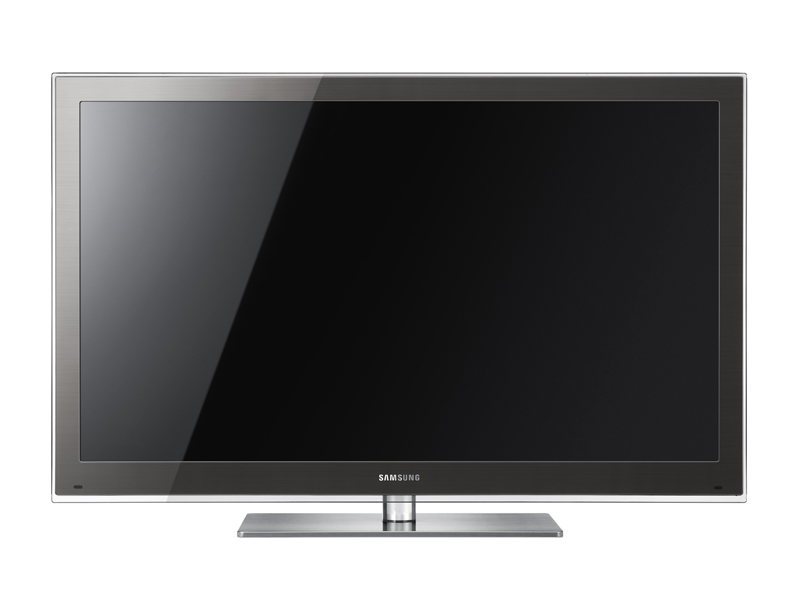Why you can trust TechRadar

The PS50C6900 suffers far less from crosstalk noise than any of Samsung's LCD/LED 3D sets.
The Golden Gate Bridge sequence on the Monsters Vs Aliens 3D Blu-ray seems tailor-made to highlight this problem but the usually distracting degree of double ghosting around problematic objects like the bridge support cables is hugely reduced.
So much so, in fact, that on the rare occasions where it's visible at all, it comes as quite a shock, despite the fact that even when it appears, it's generally on a much more subtle level than with the LCD TVs.
Three-dimensional pictures are so much more believable, engaging and crisp where there's precious little crosstalk to worry about and, despite one or two perhaps inevitable flaws, the PS50C6900's 3D pictures are the most watchable ones Samsung has yet achieved. Which is mildly ironic, given the brand's emphasis on its far more expensive LED 3D models.
The sharpness of 3D images is another pleasant surprise, despite levels of brightness and colour vividness reducing markedly more in 3D mode than you get with the ultra-bright LED 3D screens.
In fact, the PS50C6900's 3D pictures are slightly punchier than those of Panasonic's 3D plasmas, as well as retaining slightly more shadow detail during dark scenes.
Panasonic's 3D dark scenes are a little, well, darker, though and its screens still have the edge when it comes to crosstalk, suffering even less from it than the PS50C6900 (result, perhaps, of Panasonic's 3D-focussed 'fast decay' plasma cell technology).
While this extra immunity to crosstalk keeps Panasonic at the top of the 3D performance pile, however, it's worth stressing just how watchable the PS50C6900's 3D pictures are and the fact that the Samsung model is many hundreds of pounds cheaper than Panasonic's P50VT20 50in 3D plasma model.
What this all adds up to is that in many respects the PS50C6900 is already precisely that 3D bargain it always promised to be.
The PS50C6900 saves most of its compromises for 2D playback. For instance, it's immediately clear that the screen can't deliver blacks nearly as profound as Panasonic's VT20 models. It gets closer in this respect to the Japanese brand's new smaller and more affordable GT20 sets, but still doesn't quite match up.
There's a little less vibrancy and naturalism to the Samsung's portrayal of rich reds and deep greens than you get with Panasonic's latest NeoPDP TVs too and a slightly patchier, stripier appearance to colour blends.
There is a little more short-term image retention than is ideal, but this doesn't last long, is only seen for the most part over very dark shots and is considerably reduced if you're sensible with the Cell light level and brightness settings. Plus – in theory at least – it should disappear over time.
Finally in the negative column, the PS50C6900 can suffer from a little judder and softness when watching standard-def, 50Hz sources. The motion processing reduces the judder problem, of course, but can cause artefacts if set any higher than its lowest operating level.
As is often the case with plasma TVs, the PS50C6900 is much more at home with HD material. The picture suddenly kicks up a whole bunch of sharpness and clarity gears, and colours look both subtler and more natural. Motion looks better too, and even the set's contrast range looks slightly better.
One little area in which the PS50C6900 noticeably improves on Panasonic's plasmas (the cheaper ones, at least) is in the eradication of dotting noise over skin tones during horizontal camera pans.
Black levels still look a little less profound with HD than you might prefer, which is something the extra Real Black Filter on the C7000 plasma models might fix. But black levels are pretty respectable overall, especially in the context of a 3D-capable 50in TV costing less than £1,300.
One final point is that, as with all plasma TVs, the PS50C6900 can be watched from a much wider angle than any LCD screen without losing contrast or colour.
Current page: Samsung PS50C6900: Picture
Prev Page Samsung PS50C6900: Features Next Page Samsung PS50C6900: Sound, value and ease of useJohn has been writing about home entertainment technology for more than two decades - an especially impressive feat considering he still claims to only be 35 years old (yeah, right). In that time he’s reviewed hundreds if not thousands of TVs, projectors and speakers, and spent frankly far too long sitting by himself in a dark room.

